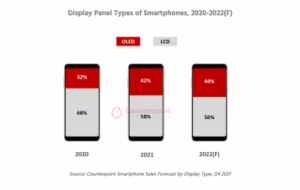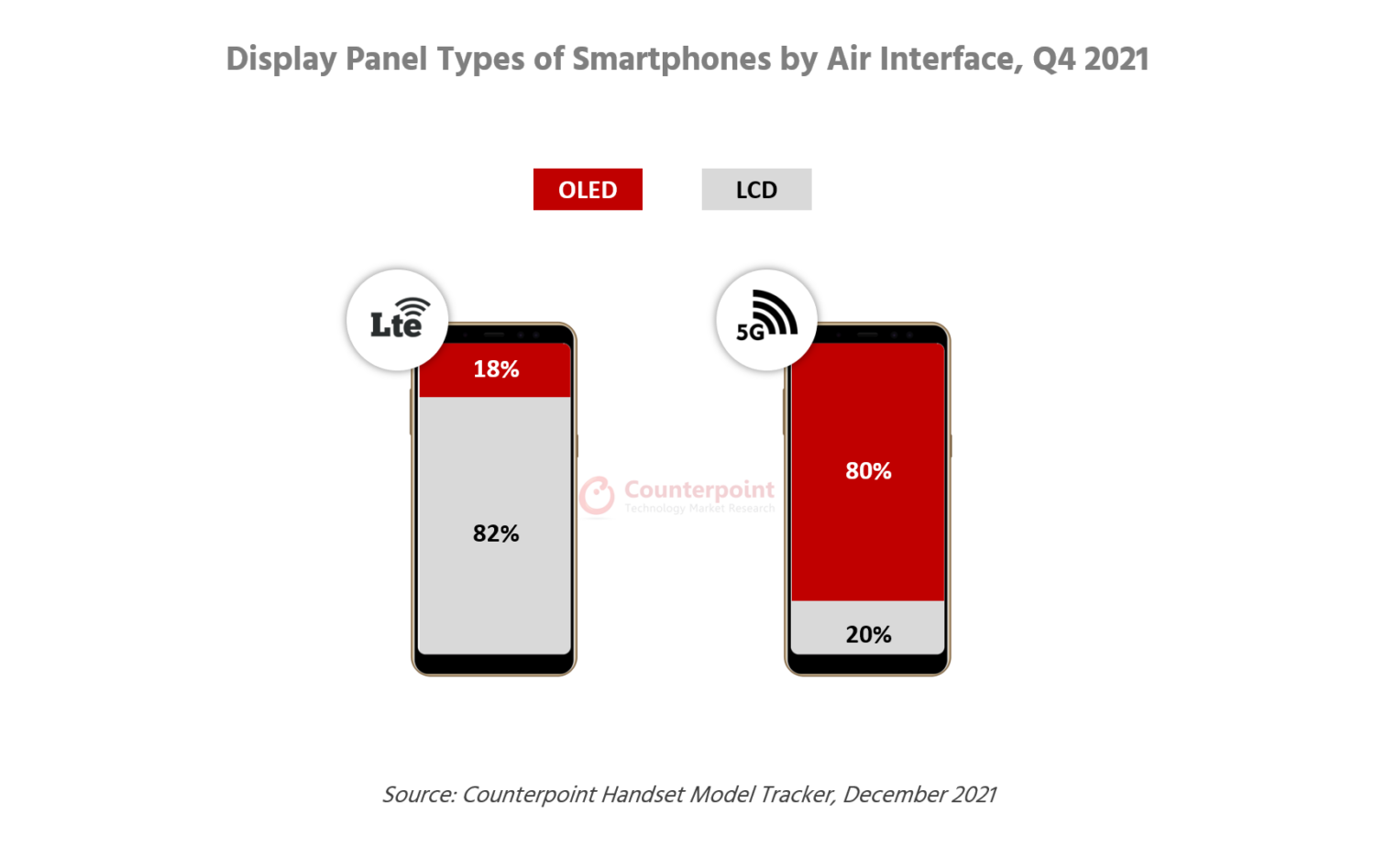LCD, which once used to dominate smartphone displays, is now gradually giving way to OLED. Widely recognized as a more advanced display, OLED has steadily increased its share in the small panel market for the past several years. However, in 2022, the pace of OLED’s growth is likely to slow down.
According to Counterpoint Research’s Smartphone Sales Forecast by Display Type, the share of OLED in smartphone display types globally is expected to increase only by 2% points YoY in 2022 to 44%. It had risen by 10% points YoY in 2021 to 42%.
This slowdown in OLED penetration is directly connected to the downward pressure on the average selling price (ASP) of 5G smartphones. Although prices of key components such as chipsets are rising due to supply shortages, OEMs have been forced to lower the shipping prices of finished products due to intensifying competition in the market and stagnation in consumption caused by the ongoing global economic slowdown. Therefore, manufacturers desperately looking to cut costs appear to be compromising on the display. According to Counterpoint’s Handset Model Tracker, the OLED adoption rate for 5G smartphones in Q4 2021 was 80%, a YoY decrease of 2% points. This is particularly noteworthy considering that 5G models have mainly driven the expansion of OLED adoption so far.
The recent demand-supply and price trends of OLED panels themselves have also become obstacles. OLED is divided into relatively inexpensive ‘rigid OLED’ and high-end ‘flexible OLED’ that has increased flexibility and strength. In the low-end to mid-end smartphones, the panel that can directly replace LCD is rigid OLED, but its global supply has now reached its limit. This is because display makers are focusing their investments on flexible OLEDs instead of the low-margin rigid OLEDs. On the other hand, the price of flexible OLED, which is preferred for premium models, dropped so much around 2020 that its adoption rate soared. Recently, however, even this downward trend in prices has come to a standstill.
Still, from a long-term perspective, the trend of OLEDs taking the place of LCDs in smartphones does not seem to change. This is closely related to the 5G market growth. Since 5G phones consume battery faster than LTE phones, OLEDs are preferred for them as they are more power-efficient than LCDs under normal conditions. Comparing smartphones sold during Q4 2021 by network type, the adoption ratio for LCD and OLED panels in LTE smartphones was 82:18, but for 5G smartphones, the ratio was 20:80.
In conclusion, the shift to OLEDs in smartphones will continue in the long term, but its pace will depend on various factors — recovery of the consumer economy, supply stabilization of key parts and reduction of flexible OLED prices. As the above conditions are unlikely to be met in 2022, it will be difficult for many smartphone manufacturers to aggressively expand OLED adoption in the near term. (WS)
As well as the power consumption issues, 5G smartphones have components taking more space,so the thin-ness of flexible OLED is also an advantage in the change to 5G. – Editor
This article was first published on the Counterpoint Research website and is reproduced with kind permission. It has been put outside our firewall, so will not count as one of your two free articles if you are have a free membership.




